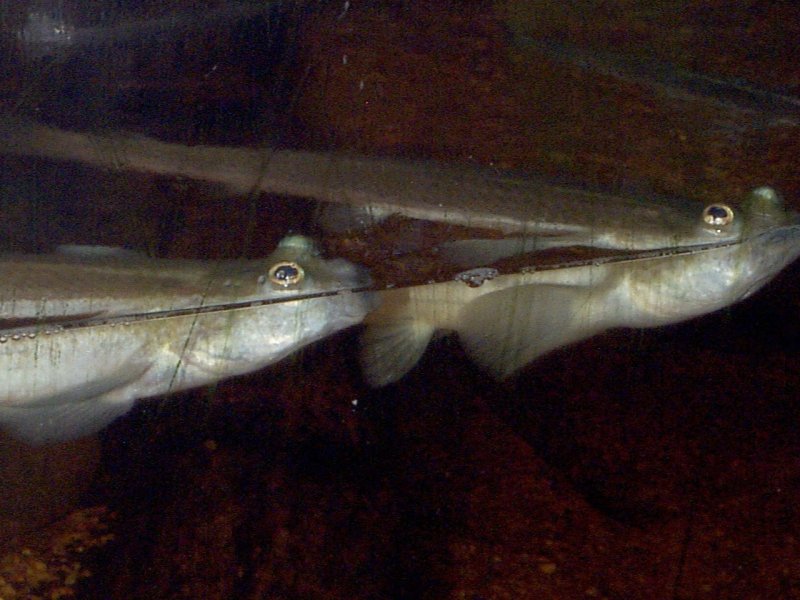Physical description:

Does this fish really have four
eyes? The generic name "Anableps" is derived from the Greek for "up-looking."
As you can see from the picture at the left, the fish appears to be gazing
meditatively upward, as though it were trying to remember how to multiply
9 x 16.
The fish does not actually have
four eyes, but the eye is divided to allow the fish to see both above and
below the waterline. A narrow band of epithelium divides the upper
and lower halves of the eye. Each half of the eye has a separate
pupil, iris and cornea, but the retina is divided. Both halves of the eye
use the same lens, with the upper light path traveling through the short
axis of the lens, while the lower light path travels through the long axis.
This dual use of the lens corrects for the different behavior of light
in air and in water, with the underwater lens face more strongly curved.
The underwater half of the eye projects an image to the upper half of the
retina, while the part of the eye above water projects to the lower retina.
The upper eye must be occasionally
wetted to prevent dehydration, but when the fish is completely submerged,
the image from the upper half of the eye is out of focus. Click
here for more information about the Anableps eye.